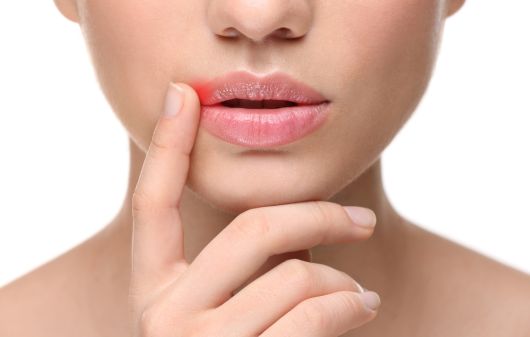
Get an Impetigo treatment online
Pus-filled, painful blisters on your legs, arms, and buttocks are called impetigo. Impetigo is a bacterial infection that can be treated with antibacterial medications. It can spread through skin-to-skin contact or sharing personal care items.
You can now connect with our doctor at Your Doctors Online for an accurate diagnosis, well-suited prescription, and treatment plan. It’s quite straightforward: You will be asked questions about your medical condition, and a prescription will be given to you that suits you best.
What is Impetigo?
Impetigo is a contagious skin condition that affects infants and young individuals. It leads to painful sores and blisters around the face and neck. After the face and neck, they can transfer to the whole body and burst to form a honey-colored crust. There are three types of impetigo: crushed, non-crusted, and ulcers. It needs to be treated after careful examination and diagnosis. The prescription will be given based on the nature of your medical condition.
What are the symptoms of Impetigo?
Some of the most prominent symptoms of impetigo are as follows:
- Mild itching and soreness.
- Reddish sores, often around the nose and mouth.
- Contagious sores that can spread through touch, clothing, and towels.
- Bullous impetigo is rare and causes larger blisters on the trunk of infants and young children.
- Sores quickly rupture, oozing for a few days and forming honey-colored crusts.
- Ecthyma is a serious impetigo that causes painful pus-filled sores with yellow scabs.
What are the causes of impetigo?
Bacteria cause bacterial infection. i.e., staphylococcus aureus or pyogenes. Other causes include
- Skin injuries or breaks after skin contact.
- Close contact with an infected person or contaminated objects.
- Warm and humid environments
- Poor hygiene practices
- The compromised immune system
- Certain medical conditions, such as eczema or dermatitis
- Crowded living conditions
- Pre-existing skin conditions, like insect bites or scabies
- Lack of access to proper medical care or treatment for the previous affected medical conditions.

How to connect with doctor for Impetigo
Connect with a health care professional online in 3 easy steps.
1
Describe your issue
Download our app, register and tell us about your medical issue to get started.
- Impetigo
- Anemia
- STD
- UTI
- Skin
- Covid
2
Chat with a doctor
Connect with a board-certified doctor. You can chat, send pictures and videos.
Hi Dr. Nicole, I have golden crusted blisters or sores around my mouth and nose. Can you help me?
3
Get online prescription
Our online doctors can help you with your medical issues and give you prescriptions.
Prescription
- Mupirocin cream 2%
- Apply twice a day for two weeks
Send Prescription
How can Impetigo be treated?
Impetigo can only be treated with antibiotics only because of its bacterial nature. Some of the most prescribed antibiotics prescribed for the treatment of impetigo are as follows:
- Topical antibiotics, such as mupirocin or fusidic acid, should be applied to the skin.
- Oral antibiotics such as penicillin or cephalosporins are to be taken by mouth.
Impetigo medication we prescribe
FAQs about Impetigo treatment online
What is Impetigo?
Impetigo is a bacterial infection that spreads to others via touch and personal use items. It causes blisters and sores on the skin, and with treatment, the condition gets better within a week, and without treatment, it goes away in a few weeks.
How long is impetigo contagious?
Once the treatment has started (from 48 hours) and the crusting or blistering stops, impetigo will stop being contagious, and skin contact with blisters of an infected person will not affect the individuals coming into contact with them.
Can adults get impetigo from a child?
Yes. Impetigo can spread from any individual when it blisters and crusts, so avoiding contact with an infected individual is advised. Once the treatment starts and the blistering or crusting stops, the contagiousness of impetigo stops.
What happens if impetigo is left untreated?
If impetigo is left untreated, it can lead to a skin abscess, which requires a diagnosis and prescription for complete treatment. It's also important to get treatment and follow the antibiotic regimen to avoid the development of antibiotic resistance.
Should I go to the doctor for impetigo?
You should consult a doctor for antibiotic treatment if your impetigo is not going away and is spreading to other areas of the body. The mild infection usually clears up on its own, but if the sores are becoming pus-filled and are causing pain, you must consult a doctor immediately.
What is the fastest way to cure impetigo?
The fastest way to cure impetigo is by topical prescription antibiotics on the sores or blisters for 5-10 days. One of the effective topical medications for impetigo is mupirocin.
Will bacitracin treat impetigo?
No, it is an over-the-counter option for mild infections which are not contagious. For impetigo, the first line of treatment is oral antibiotics which are available upon prescription only.
How do you treat impetigo nappy rash?
An impetigo nappy rash can be treated with topical antibiotics within 5-7 days if the rash is mild. However, the non-bulbous forms can take longer. If your impetigo rash has spread to other body parts, consult a doctor for a stronger oral or topical antibiotic.
Will impetigo go away without antibiotics?
Mild cases of impetigo go away in 2-3 weeks without treatment, but treatment can contain the infection and helps recover faster in less than ten days.
Why is impetigo so hard to get rid of?
Impetigo is caused by methicillin-resistant bacteria called Staphylococcus aureus, which is resistant to usual antibiotics. That’s why it is a bit hard to treat and to nullify the infection fully.
What is the best oral antibiotic for impetigo?
The best oral antibiotics for impetigo include beta-lactamase-resistant antibiotics like dicloxacillin, cephalosporins, and amoxicillin-clavulanate. For impetigo in children, cephalexin is recommended by doctors.
Does impetigo leave scars?
Impetigo may leave scars in cases where the person scratches the blister or sores. If left to heal, they don’t leave scars; the blister or sore heals without a mark.
How quickly does fucidin cream work on impetigo?
With fucidin cream, the impetigo takes two weeks to heal completely. The correct dosage is recommended by the doctor as per your condition. The symptoms start improving within 24 hours, but complete recovery takes 14 days for the bacterial infection to disappear.
-Phindile Mkhatshwa
-brooke snow
-Okiti Stephanie
-ASIF Khan
-Chelsey
-edith bien aime
-Lesego Thejane
-Stephanie Brown
-kulwinder gill
-Elijah Mark
Get started today
Talk to online doctors now and get medical advice, online prescriptions, refills, lab requisitions and medical notes within minutes. On-demand healthcare services at your fingertips.





